Deep Purple “The Book Of Taliesyn”
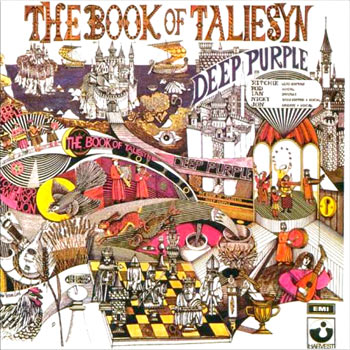
The first incarnation of Deep Purple has tended to be ignored until lately, shaded by the
overwhelming success of Mark II which benefited from a homogeneous (and supremely
timely) musical direction and the outstanding talent of Ian Gillan. By contrast Mark I found
itself at a many-sided crossroads; musically the band was pulled in the conflicting directions
of freakbeat, psychedelia, retro-classical and nascent prog-rock, and perversely it enjoyed
unexpected early adulation in the States whilst remaining virtually unknown in its homeland.
Adverse critical comment of Mark I has only recently begun to ease, as the undoubted
attractions of some of the early works become retrospectively appreciated and the works
themselves remastered and reissued.
Even the beginnings of Purple were artificial, the band being conceived by ex-Searchers
drummer Chris Curtis as Roundabout, an ever-changing musicians’ combine, and sponsored
by two London businessmen looking for a purely commercial foothold in the pop market.
The Mark I lineup pulled in diversely-experienced, classically-trained session musicians
Ritchie Blackmore (gtr), Jon Lord (keys) and Ian Paice (drs). Bassist Nick Simper had played
rock’n’roll with Johnny Kidd and Screaming Lord Sutch alongside Blackmore, and vocalist
Rod Evans came with Paice from Mod R’n’B outfit the Maze. A unified direction was unlikely
from the start.
Following the clearly saleable example of Vanilla Fudge, the band developed a set
based largely on grandiose reinterpretations of known hit songs, subjected to Lord’s cod-
classical Hammond interludes, Paice’s jazzy percussion and Blackmore’s unique, manic
style of soloing involving heavy use of his Stratocaster’s whammy bar. The first album,
Shades Of Deep Purple, produced an unexpected US hit single with a rollicking cover of
Joe South’s Hush. This led rapidly to a second album and a prestigious support slot to
Cream on the latter’s final US tour. Meanwhile, the band couldn’t get arrested at home.
The Book Of Taliesyn (pronounced Tal-ee-ess-in) followed the pattern of Shades Of,
expending first-class musicianship over a confusingly diverse mix of styles, most of which
deserves more attention than it’s received. Listen, Learn, Read On is tautly-constructed
psychedelia with a semi-recitative vocal extolling the virtues of the tome in the album’s title
(Taliesyn was the bard at King Arthur’s court); Evans’s powerful vocal on this belies one
critic’s description of him as a supper-club crooner, although he does display Scott Walker–
ish tendencies on the string-quartet-enhanced ballad Anthem. Kentucky Woman is a
similarly energetic workout on the modest Neil Diamond tune to the earlier Hush which
would again feature in the US singles chart. Wring That Neck is a stereo-tastic proto-prog
instrumental in which Lord and Blackmore vie for supremacy; it portends the sound of In
Rock and would remain in the live set for years. Pretentious covers of We Can Work It Out
and River Deep, Mountain High segue out of equally bombastic classical themes in which
Lord displays the same leanings as Keith Emerson without the outrageous stagecraft; this
is the sort of pomp-rock material that’s reduced Mark I in the eyes of its later heavy-metal
acolytes. Perhaps the best track, Shield, is a funky, loping offering with an impenetrable
hippie (or possibly sci-fi) lyric, a catchy, almost oriental organ riff, and splendid guitar work
throughout which deserved to be a hit single in its own right.
Home success continued to elude Purple until the collapse of its US label, Tetragrammaton,
forced the band to return home, re-evaluate and regroup. Evans and Simper were fired and
replaced, and the rest is history. The first three albums, however, show that all the required
elements were in place; only the focus was missing. Avoid the earliest CD reissues and go
for the remastered (at Abbey Road) versions with bonus tracks.
“Listen, Learn, Read On”
![]() CD Reissue | 2000 | EMI | buy at amazon ]
CD Reissue | 2000 | EMI | buy at amazon ]
![]() Vinyl | 1968 | Harvest | search ebay ]
Vinyl | 1968 | Harvest | search ebay ]
Also Recommended

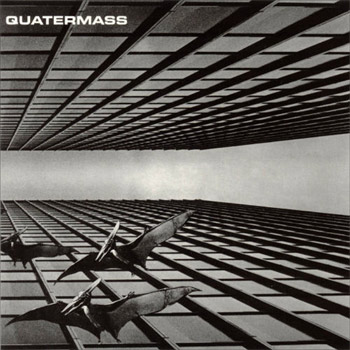
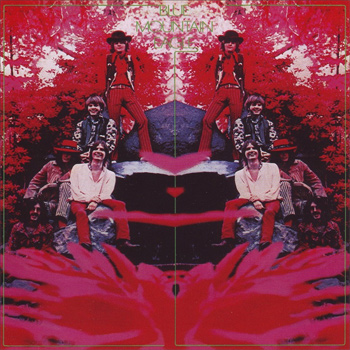
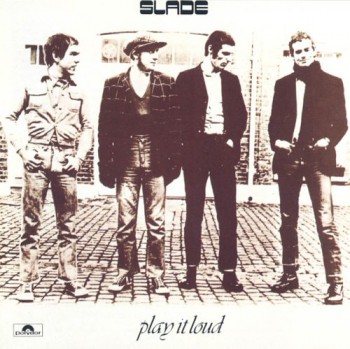
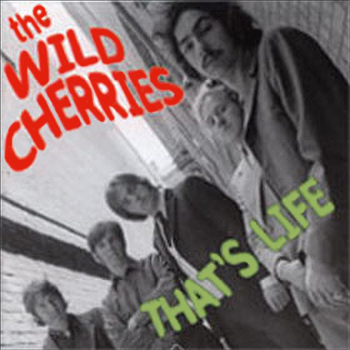
For those Stormers who don’t get out much, there’s plenty about Taliesyn on Wikipedia (where it’s spelt Taliesin). He was a sixth-century Welsh poet, and his name in Middle Welsh means “shining brow”. Follicly challenged, perhaps? The link with King Arthur is mythical, apparently – probably down to Tennyson: I wouldn’t put it past him. The abstruse lyrics from “Shield” are reportedly lifted almost verbatim from the Book itself, so someone in the band must have been reading it in ’68 (I was still struggling with Lord Of The Rings then). What you can learn on The Rising Storm!
The album Deep Purple released after this….simply titled Deep Purple from 1969 is very, very good. It’s the album where everything comes together for the first lineup of Deep Purple. I take nothing away from Fireball or In Rock but Deep Purple from 1969 is up there – even the Donovan cover of Lalena is really good – the rest of the LP is all originals. Captain Beyond’s debut is really really fine hard rock with a touch of prog too.
Thanks, Jason. On the strength of Taliesyn I’ve ordered the first and third albums, and will add a note here about them when they arrive and I’ve had a earful. Definitely one of the GREAT rock outfits, at least up till Blackmore and Gillan slung their hooks. Dunno about the stuff after that, but prepared to give it a try. Tommy Bolin was certainly a fine plank basher, his life cut short far too early by heroin. Why the hell do they do that?
OK, I now have the first and third albums under my belt and can confirm that they’re as worthwhile as Taliesyn. They contain the same eclectic mix of psych, cod-classical, hi-energy rocked-up pop and nascent metal as the latter, veering gradually towards the Mark II formula on the third album. The quality is uniformly excellent, with no filler anywhere: amazing, given the short timeframe for the three releases. If these had been recorded by an unknown band we’d be lauding them as undiscovered heroes of early progressive music and paying small fortunes for the original vinyl. Because they’re by the band better known for the riff-tastic confections of Mark II, and because they failed to ignite here in the UK, they’ve gone unremarked in their home country. They’re now available at a knockdown price in fine remastered form with interesting bonus tracks – some of the earliest remastered from acetates, as the tapes are long gone – and worthy of the attention of all early prog-rock devotees. Metalheads will find enough Blackmore shenanigans to keep them more than happy. Get these albums.
Book of Taliesyn is one of my favorite old psychedelic albums, along with Touch, Pretty Things “SFSorrow”, Fifty Foot Hose “Cauldron”, Mad River, Spooky Tooth “Ceremony”, Ultimate Spinach “Behold and See”.
This was the last good Deep Purple album they ever produced. “Machine Head” was exciting, but “Smoke on the Water” is a wretched boredom.
When I first got into DP, it was from Made In Japan. When I went back to listen to the MK I records, I was blown away. The reason I am posting is because on my media player, Listen Learn Read On came on. One of my favorites…